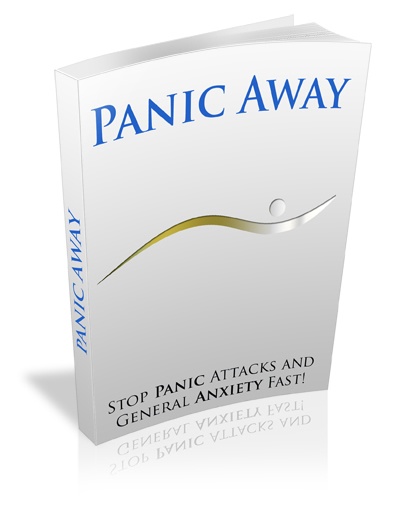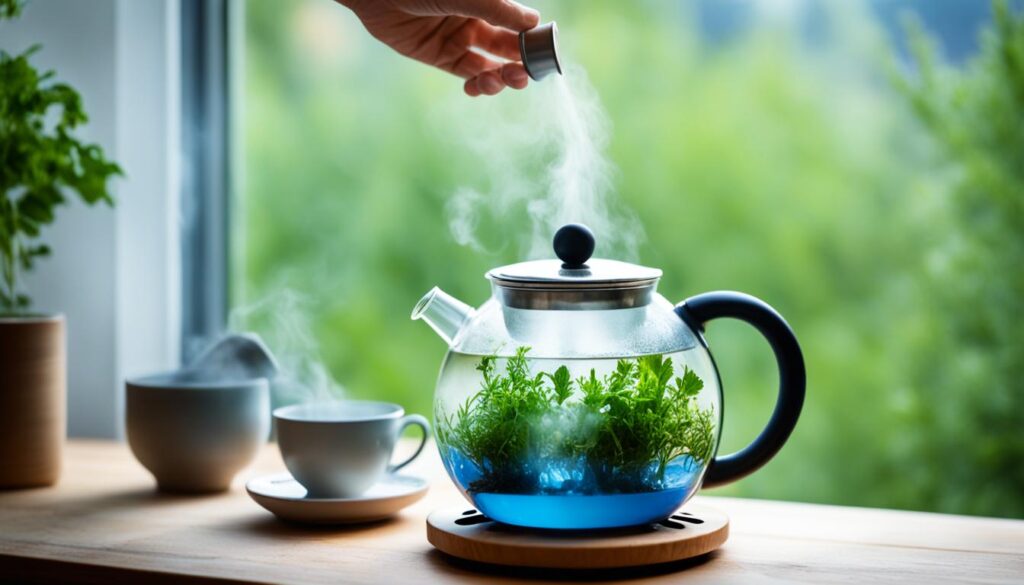Do you ever feel the weight of anxiety pressing down on your chest, making it hard to breathe? I know that feeling all too well. For years, I struggled with overwhelming anxiety that seemed to control every aspect of my life. The constant worry, racing thoughts, and physical symptoms left me feeling exhausted and defeated.
But then, I discovered the power of mindfulness. It became my lifeline, offering a sense of calm and relief in the midst of chaos. Through mindfulness techniques, I learned to cope with anxiety, manage stress, and find peace in the present moment.
Our Top Pick For Beating Panic Attacks

Stopping, and preventing, panic attacks is now even easier.
In this article, I want to share with you 10 effective mindfulness strategies that have helped me combat anxiety and find inner calm. These strategies are simple yet powerful, and they don't require any special equipment or a large time commitment. They are accessible to anyone who wants to improve their mental health and find relief from anxiety.
Key Takeaways:
- Practicing mindfulness can help reduce anxiety and manage stress.
- Setting an intention can provide a sense of purpose and ease anxiety.
- Guided meditations and mindfulness practices are accessible through apps and online programs.
- Doodling or coloring can engage your creative mind and provide a break from anxious thoughts.
- Going for a walk in nature can soothe anxiety and bring a sense of calm.
Set an intention
Setting an intention is an essential aspect of mindfulness practice. It helps to focus the mind and remind us why we are engaging in mindfulness in the first place. Whether you are preparing for a significant work presentation or starting your day, setting an intention can provide a sense of purpose and help alleviate anxiety.
When setting an intention, consider what you want to cultivate in your mindfulness practice. It can be as simple as intending to take care of your body or treating yourself with kindness. By setting a clear intention, you create a guiding principle for your practice, allowing you to come back to it during moments of stress or distraction.
Examples of Intentions
- Focus on the present moment and let go of worries about the future or regrets about the past.
- Nurture a sense of gratitude and appreciation for the small joys in life.
- Approach challenges with curiosity and an open mind.
- Cultivate compassion towards yourself and others.
- Practice self-care and prioritize your well-being.
Setting an intention before you start any mindfulness practice can bring a deeper level of meaning and fulfillment to your journey. Remember that intention-based mindfulness is a personal experience, and your intentions should resonate with your unique needs and aspirations.
Do a guided meditation or mindfulness practice
If you're new to mindfulness or find it difficult to calm your mind on your own, guided meditations and mindfulness practices can be a helpful tool. These resources provide step-by-step guidance and support, making it easier for beginners to engage in mindfulness practices. Whether you choose to do a guided meditation or a mindfulness exercise, these practices can effectively reduce anxiety and promote a sense of calm.
There are various options for guided mindfulness meditation available both online and through mobile apps. These platforms offer a wide range of guided meditation sessions catered to different needs and preferences. Some popular mindfulness apps include:
- Headspace
- Calm
- Insight Timer
- 10% Happier
These apps provide a variety of meditation options, including guided sessions, sleep meditations, breathing exercises, and more. They offer a user-friendly interface and allow you to customize your meditation experience based on your goals and preferences.
Online meditation programs and websites also offer guided practices led by experienced teachers. These programs often provide a structured approach to meditation, allowing you to develop a consistent mindfulness practice. Some well-known online resources for guided meditation and mindfulness practices include:
- Mindful
- UCLA Mindful Awareness Research Center
- Tara Brach
- The Mindfulness App
Engaging in a guided meditation or mindfulness practice is a convenient and accessible way to incorporate mindfulness into your daily routine. It allows you to deepen your understanding of mindfulness techniques and experience the benefits of anxiety relief. Whether you prefer using a mobile app or accessing online resources, these guided practices can help you cultivate a greater sense of calm and well-being.

| Benefits of Guided Meditation and Mindfulness Apps |
|---|
| 1. Provides step-by-step guidance for beginners |
| 2. Offers a variety of meditation options |
| 3. Allows for customization based on goals and preferences |
| 4. Accessible through mobile apps and online platforms |
| 5. Convenient for practicing in the comfort of your own home |
Doodle or color
When it comes to finding relaxation and relief from anxiety, sometimes the simplest activities can have the biggest impact. Taking a few minutes to doodle or color can engage your creative mind and provide a break from anxious thoughts. You don't need to be an artist to benefit from this practice; even basic doodling can help calm the mind and reduce stress.
If you find the idea of drawing intimidating, investing in a coloring book can be a simple and effective way to relax and achieve a sense of accomplishment without the pressure of a blank page. Find a coloring book that appeals to you and grab your favorite coloring tools. Whether it's coloring intricate patterns or filling in beautiful landscapes, immersing yourself in the colors and shapes can be a therapeutic and calming experience.
Art therapy for anxiety has gained recognition for its ability to promote relaxation and self-expression. Engaging in this creative mindfulness exercise allows you to focus on the present moment and channel your emotions in a positive way. It can also help improve your mood, boost your self-esteem, and enhance your overall well-being.
Tips for Doodling or Coloring:
- Start with simple shapes or patterns if you're new to drawing.
- Experiment with different colors and mediums to find what you enjoy the most.
- Don't worry about making mistakes; embrace imperfections and let go of perfectionism.
- Set aside a designated time for doodling or coloring, treating it as a mindful practice.
- Play relaxing music or create a calming environment to enhance the experience.
Next time you're feeling overwhelmed or anxious, grab a sheet of paper or a coloring book and let your creative mind take over. You'll be amazed at how this simple act of doodling or coloring can bring you a moment of peace and tranquility.
Go for a walk
One of the simplest and most effective ways to practice mindfulness and alleviate anxiety is by going for a walk in nature. Walking allows you to connect with your surroundings, engage your senses, and bring a sense of calm to your mind. By leaving your phone behind, you can fully immerse yourself in the present moment and experience the therapeutic benefits of mindful walking.

When you embark on a mindful walk, pay attention to the sights, sounds, and sensations around you. Marvel at the beauty of nature, listen to the rustling of leaves, and feel the gentle breeze on your skin. Allow yourself to be present and aware of each step you take, grounding yourself in the present moment.
As you engage in mindful walking exercises, focus on your breath and tune into the rhythm of your footsteps. With each inhalation and exhalation, feel the tension and stress leaving your body, replaced by a sense of peace and tranquility. Use this time to let go of racing thoughts and anxieties, allowing nature to bring you a much-needed respite.
Incorporating mindful walking into your routine can provide ongoing anxiety relief and improve your overall well-being. To get started, find a peaceful outdoor setting, such as a park, forest, or beach, where you can fully connect with nature. Set aside a specific time for your walks and make them a regular part of your self-care routine.
| Benefits of Mindful Walking for Anxiety Relief |
|---|
| 1. Reduces stress and anxiety levels |
| 2. Improves mood and promotes a sense of calm |
| 3. Enhances mindfulness and present moment awareness |
| 4. Boosts mental clarity and focus |
| 5. Provides exercise and promotes physical well-being |
| 6. Strengthens the immune system and improves overall health |
Wish other people happiness
Taking just 10 seconds to wish someone happiness can shift your mindset towards positivity. This simple act of spreading positive energy through loving-kindness meditation can have a profound impact on your own well-being and reduce anxiety. By practicing mindfulness of others' well-being and cultivating a genuine desire for their happiness, you not only contribute to their positivity but also create a ripple effect of positivity in your own life.
Throughout the day, whether you're commuting, at work, or in line, take a moment to silently wish those around you happiness. It can be a stranger passing by, a colleague, or even a loved one. By sending out these silent well-wishes, you are actively practicing mindfulness and consciously shifting your focus away from your own anxieties.
To make this practice even more powerful, you can visualize the person's face or think about their qualities that you appreciate. By directing loving-kindness towards others, you are fostering a sense of connection and empathy, which can help alleviate feelings of anxiety and bring about a greater sense of peace within yourself.
“May you be happy and free from suffering. May you experience joy and peace.”
Incorporate this practice of wishing others happiness into your daily routine. By doing so, you are not only benefiting those around you but also creating a positive and compassionate environment for yourself. Remember, the more we spread positive energy and cultivate mindfulness of others' well-being, the more we contribute to our own happiness and overall well-being.
Benefits of wishing others happiness:
- Increases feelings of interconnectedness and empathy
- Reduces anxiety and promotes inner peace
- Creates a positive mindset and outlook
- Fosters a sense of purpose and fulfillment
By consistently practicing loving-kindness meditation and spreading positive energy, you can cultivate a greater sense of mindfulness and well-being in your own life. So why not take a moment right now to silently wish someone happiness? It's a simple yet powerful act that has the potential to transform both your life and the lives of those around you.
Look up
When it comes to finding peace and perspective, sometimes all we need is a gentle reminder of the vastness of the universe. Taking a moment to look up at the stars can be a powerful practice in mindfulness and anxiety relief. As you gaze at the celestial wonders above, you'll find yourself naturally drawn into the present moment, away from the worries and stresses of daily life.

Allow yourself to take a few deep breaths, allowing the cool night air to fill your lungs. With each exhale, release any tension or anxiety you may be holding onto. As you shift your focus to the beauty and vastness of the cosmos, your own worries will feel smaller in comparison.
Stargazing is a simple act that can bring a profound sense of peace and perspective. It reminds us that we are part of something much larger than ourselves, and that our troubles are just one small piece of the grand tapestry of existence. So, take a moment tonight to look up at the stars, embrace the stillness, and allow yourself to be filled with the awe-inspiring beauty of the universe.
Brew on it
Making a cup of tea can be a mindful practice that helps you focus on the present moment. It's a simple activity that invites you to slow down, be fully present, and savor each step of the process. Whether you prefer herbal, green, or black tea, the ritual of brewing can be a form of meditation in itself.
Start by selecting your favorite tea leaves or bags, paying attention to their aroma and texture. Feel the weight of the container in your hands, noticing the sensation of touch. As you open it, inhale deeply, allowing the scent to envelop your senses. Appreciate the beauty of the leaves, observing their colors and shapes.
Next, heat the water and listen to the peaceful sound of it coming to a gentle boil. Notice the steam rising and the way it dances in the air. Pour the hot water into your teapot or cup, observing the change in color and the infusion taking place. As the tea steeps, take a moment to pause and focus on your breath. Inhale deeply, exhaling any tension or distractions.
Quote:
I find the act of brewing tea to be a form of self-care and mindfulness. It's my way of creating a moment of tranquility in the midst of a busy day.
Once your tea is ready, take the time to savor each sip mindfully. Feel the warmth of the cup in your hands, the smooth texture of the liquid as it touches your lips. Let the flavors unfold on your tongue, noticing the subtle notes and sensations. With each sip, allow yourself to be fully present, immersing yourself in the experience.
If tea is not your preference, you can apply this practice to other everyday activities, such as making coffee or preparing a warm beverage of your choice. The key is to approach these moments with intention and presence, bringing mindfulness into your daily routines.

Focus on one thing at a time
Your to-do list can become an opportunity for mindfulness if you approach it with intention. Instead of overwhelming yourself with multitasking, try the practice of single-tasking. Set a timer for five minutes and give your full attention to one task without distraction. Resist the urge to check your phone or engage in other activities simultaneously. By focusing on one thing at a time, you can cultivate mindfulness and reduce anxiety.
Undivided attention practice allows you to fully immerse yourself in the present moment and bring a sense of calm to your mind. By shifting your focus from multitasking to single-tasking, you can experience a greater sense of clarity and efficiency. This practice not only improves your productivity but also helps relieve anxiety by reducing mental clutter.
When you devote your full attention to a single task, you become more aware of the details and nuances of the task at hand. Whether it's completing a work assignment, cooking a meal, or even washing the dishes, allowing yourself to be fully present in the moment can bring a sense of peace and fulfillment.
Next time you find yourself overwhelmed with a long to-do list, remember the power of single-tasking. Embrace the opportunity to focus on one task at a time, giving it your undivided attention. By doing so, you not only practice mindfulness but also find relief from anxiety and stress.

| Benefits of Single-Tasking | How to Practice Single-Tasking |
|---|---|
| 1. Increased focus and concentration | 1. Set a timer for five minutes |
| 2. Reduced stress and anxiety | 2. Choose one task from your to-do list |
| 3. Improved productivity | 3. Eliminate distractions |
| 4. Enhanced creativity and problem-solving | 4. Fully immerse yourself in the task |
| 5. Better time management | 5. Complete the task before moving on to the next one |
Leave your phone behind
Constantly having your phone with you can contribute to anxiety and distract you from the present moment. The constant notifications, social media feeds, and the pressure to always be connected can be overwhelming. It's important to take a break from your phone and embrace mindful phone usage for a digital detox. Challenge yourself to leave your phone behind in certain situations, such as when you go into another room or sit down to eat. By doing so, you can take a moment for yourself without the distractions of technology and breathe deeply before engaging in the next activity.
Leaving your phone behind allows you to be more mindful and present in your daily activities. Instead of constantly checking your phone and getting caught up in the digital world, you can focus on the here and now. Whether you're spending time with loved ones, exploring nature, or simply enjoying a quiet moment alone, leaving your phone behind can help you fully immerse yourself in the present moment.
Research has shown that mindfulness in daily activities can have numerous benefits for your mental well-being. It allows you to cultivate a sense of calm, reduce stress, and improve your overall focus and attention. By intentionally leaving your phone behind, you can create space for these mindfulness practices and experience the benefits firsthand.
Next time you feel the urge to reach for your phone, pause and ask yourself if you really need it in that moment. Can you take a few minutes to be fully present without the distractions of technology? Embracing mindful phone usage and incorporating digital detox breaks into your daily routine can have a profound impact on your mental health and overall well-being.

Remember, it's not about completely disconnecting from the digital world. Technology plays a vital role in our lives, and it's important to find a healthy balance. The key is to be mindful of your phone usage and consciously choose when to engage with it. By leaving your phone behind in certain situations, you can reclaim your time, reduce anxiety, and embrace the beauty of the present moment.
Turn household tasks into a mental break
Instead of obsessing over your to-do list or clutter, approach household tasks as an opportunity for a mental break. Engaging in mindful cleaning and finding peace in everyday tasks can bring a sense of calm and reduce anxiety.
While doing the dishes, put on some music and let yourself dance and move to the rhythm. Take joy in the simple act of cleaning and let the physical movement release any tension you may be carrying.
When cleaning the shower, pay attention to the soap running down the tiles. Notice the scent and texture of the soap as you scrub, immersing yourself in the present moment. Allow the repetitive motion to become a source of relaxation and focus.
Take slow, deep breaths while waiting for the microwave to finish or for a pot to boil. Use this time to center yourself, bringing attention to your breath and finding calm in the stillness of the moment.
Embracing mindfulness in these everyday activities can transform them into moments of self-care and rejuvenation. By nurturing a mindful mindset, you can find peace and tranquility even in the midst of household chores.

Benefits of Mindful Cleaning
Mindful cleaning not only promotes a clean environment but also has several mental and emotional benefits. By incorporating mindfulness into your cleaning routine, you can:
- Reduce stress and anxiety
- Improve focus and concentration
- Create a sense of order and control
- Enhance gratitude and appreciation for your living space
- Find joy in the process of cleaning
By turning household tasks into mindful moments, you can transform your perspective and create a more peaceful and harmonious home. Embrace the opportunity to practice mindfulness in your everyday life and discover the profound impact it can have on your overall well-being.
Conclusion
Mindfulness offers a variety of effective strategies for relieving anxiety and improving mental well-being. By incorporating mindfulness into your daily life, you can experience a greater sense of calm and find relief from the burden of anxiety.
One key strategy is setting intentions, which provides focus and purpose to your mindfulness practice. Whether it's starting your day or confronting a challenging situation, setting an intention can help alleviate anxiety by reminding you of your values and goals.
Practicing guided meditation or mindfulness exercises is another powerful technique. Utilize online resources, such as mindfulness apps or guided meditation programs, to receive step-by-step guidance in calming the mind and reducing anxiety.
Engaging in creative activities like doodling or coloring can also be an effective way to relax and shift your attention away from anxious thoughts. Taking a walk in nature, leaving your phone behind, and focusing on one task at a time are additional strategies that can help you incorporate mindfulness into your daily life and achieve anxiety relief. Remember, consistency is key to reaping the full benefits of mindfulness and finding inner peace.
FAQ
What are some effective mindfulness strategies to combat anxiety?
There are several mindfulness strategies that can help combat anxiety, including setting intentions, doing guided meditations or mindfulness practices, doodling or coloring, going for a walk in nature, wishing others happiness, looking up at the stars, brewing a cup of tea mindfully, focusing on one thing at a time, leaving your phone behind, and turning household tasks into a mental break.
How can setting an intention help ease anxiety?
Setting an intention can provide a sense of purpose and focus, reminding you why you are practicing mindfulness. Whether it's before a big speech or starting your day, setting an intention such as taking care of your body or treating yourself with kindness can help ease anxiety.
How can guided meditations and mindfulness practices reduce anxiety?
Engaging in guided meditations and mindfulness practices can help calm the mind and reduce anxiety. These practices are easily accessible through apps and online programs and offer step-by-step guidance for beginners. By following along with a guided meditation or mindfulness practice, you can effectively focus your attention and provide relief from anxiety.
How can doodling or coloring help with anxiety?
Taking a few minutes to doodle or color can engage your creative mind and provide a break from anxious thoughts. Even if drawing stresses you out, investing in a coloring book can be a simple and effective way to relax and achieve a sense of accomplishment without the pressure of a blank page. This activity can help calm your mind and reduce anxiety.
How can going for a walk in nature help reduce anxiety?
Being in nature and paying attention to your surroundings can be incredibly soothing for anxiety. Going for a walk allows you to focus on your senses, such as the sounds, the feel of the wind, and the smells around you. By leaving your phone behind and immersing yourself in the present moment, you can reduce anxiety and bring a sense of calm.
How can wishing others happiness help with anxiety?
Taking just 10 seconds to wish someone happiness can shift your mindset towards positivity. By cultivating positive energy and wishing others well, you may experience an increase in happiness and a decrease in anxiety. This practice can be done silently in your head throughout the day, providing a simple and effective way to reduce anxiety.
How can looking up at the stars help ease anxiety?
Pausing to look up at the stars can remind you of the vastness of the universe and put your worries into perspective. By taking a moment to appreciate the beauty of the cosmos and take a few deep breaths, you can shift your focus away from anxiety and bring a sense of peace.
How can brewing a cup of tea mindfully be helpful for anxiety?
Making a cup of tea can be a mindful practice that helps you focus on the present moment. By paying attention to each step of the process, from the smell of the leaves to the color of the water, you can engage your senses and bring a sense of calm. Take the time to sip your tea without distraction, savoring each moment and reducing anxiety.
How can focusing on one thing at a time reduce anxiety?
Your to-do list can become an opportunity for mindfulness if you approach it with intention. By setting a timer for five minutes and giving your full attention to one task without distraction, you can cultivate mindfulness and reduce anxiety. By focusing on one thing at a time, you can prevent overwhelm and find a sense of calm.
Why is it helpful to leave your phone behind?
Constantly having your phone with you can contribute to anxiety and distract you from the present moment. By challenging yourself to leave your phone behind in certain situations, such as when you go into another room or sit down to eat, you can take a moment for yourself without the distractions of technology. This can help reduce anxiety and promote mindfulness.
How can turning household tasks into a mental break alleviate anxiety?
Instead of obsessing over your to-do list or clutter, approaching household tasks as an opportunity for a mental break can help alleviate anxiety. For example, you can dance while doing the dishes, pay attention to the soap running down the tiles while cleaning the shower, or take slow breaths while waiting for the microwave. Embracing mindfulness in these everyday activities can bring a sense of calm and reduce anxiety.
How can mindfulness be incorporated into daily life to combat anxiety?
Mindfulness offers a variety of strategies for combatting anxiety and improving mental well-being. By setting intentions, practicing guided meditation, engaging in creative activities, connecting with nature, and focusing on single tasks, you can incorporate mindfulness into your daily life to reduce anxiety and find inner calm. Experiment with different techniques and find what works best for you. Remember that consistency is key in developing a mindfulness practice and reaping its benefits.


